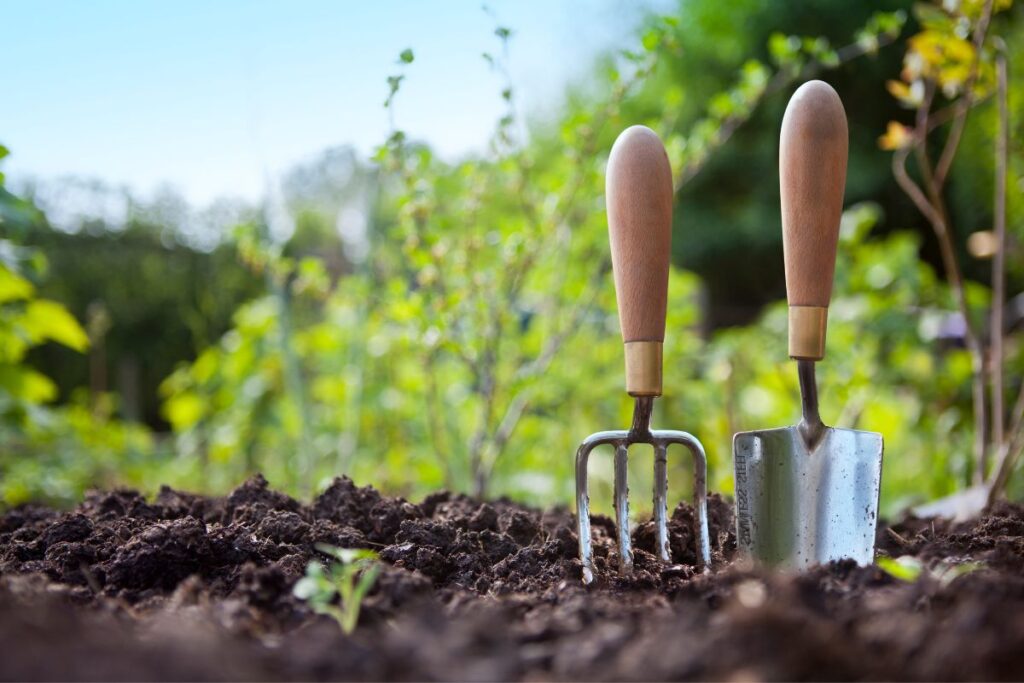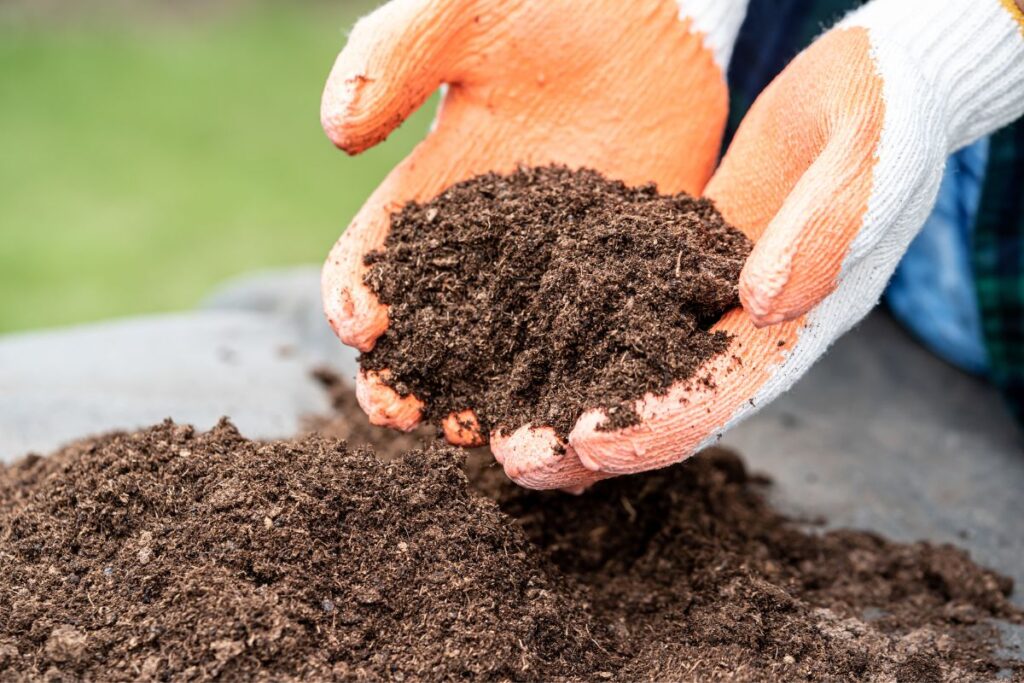You may think that garden soil is the best option for your indoor plants, but you’d be wrong. Garden soil can contain loads of pests and diseases that can harm your beloved greenery. On top of this, it’s dense and doesn’t provide enough airflow for the roots to breathe. Don’t worry though; there are plenty of alternatives that will help you keep your plants healthy and thriving. In this article, we’ll discuss why garden soil isn’t a good choice for indoor plants and what type of potting mix should be used instead.

Contents
Why It’s A Bad Idea To Use Garden Soil for Indoor Plants
Garden Soil is Too Heavy for Indoor Plants
Gardening soil’s too heavy for indoors—it won’t do. Indoor plants need soil that is lightweight and drains well, which garden soil simply cannot provide. Garden soil has a higher acidity and pH balance than other types of indoor potting mixes, making it difficult for the plant to take up nutrients as easily. Using garden soil in an indoor pot can also increase the risk of overwatering due to its heavier texture, potentially causing root rot or other diseases.
Garden Soil Has Poor Drainage
You may find that poor drainage in garden soil can lead to water accumulation, preventing oxygen from reaching the roots and ultimately killing your plant. Poor drainage is often caused by high levels of salinity or acidic soil, as well as soil compaction which makes it difficult for water to pass through. This lack of aeration can cause a nutrient imbalance, making it difficult for plants to access the nutrients they need to survive indoors. To ensure that your indoor plants thrive in their environment, use a potting mix specifically designed for indoor plants with good drainage properties.
Garden Soil Has Less Aeration

Gardens soil’s lack of aeration not only prevents oxygen from reaching roots but can also lead to nutrient deficiencies, making it difficult for plants to thrive. Properly preparing garden soil with the correct balance of air space will allow your indoor plants to get the oxygen they need while providing a nutrient-rich environment. Additionally, selecting plant varieties that don’t require as much available oxygen can help reduce any drainage issues caused by poor aeration. Taking these steps ahead of time will give you peace of mind as you watch your houseplants grow strong and healthy in their new home.
Garden Soil May Not Contain Essential Nutrients
Without essential nutrients, garden soil can be inadequate for sustaining healthy plant growth. This is because it may not have the right balance of nutrients that are needed for optimal plant health. To check if your garden soil has enough nutrients to sustain indoor plants, you should consider testing the soil or adding soil additives that will help create a better nutrient balance. Soil testing kits are available at most home and garden stores and can help you determine whether your soil contains all the necessary minerals and macronutrients to support a healthy indoor plant.
If the test reveals an imbalance in essential elements, potting mix can also be added to supplement the existing nutrient content in your garden soil. Potting mixes are designed with specific combinations of organic matter and fertilizers that provide the necessary nutrition for indoor plants. Ultimately, these methods will help maintain proper nutrient balance in your garden soil so it can adequately support healthy indoor plants!
Garden Soil May Contain Pests & Diseases
Unbeknownst to many, the garden soil may be harboring pests and diseases that can damage your plants. These pests and diseases can spread quickly and cause devastating effects on your garden. Some common pests found in soil include nematodes, grubs, and cutworms, while diseases like fungal infections and root rot can also thrive in soil. Therefore, it’s important to consider what kind of potential pests and diseases are lurking in the garden soil before attempting to introduce it indoors.
What Should I Use in My Pots Instead of Garden Soil?
You can’t just use any soil when potting your beloved indoor plants – it’s important to find something specifically suited for their needs! Soilless mixes, like those made from peat moss and perlite, are the best choice for indoor plants as they have the right mineral content and water retention capabilities. Additionally, these soilless mixes usually contain some organic matter which helps provide essential nutrients to your plants without having to add fertilizer. When choosing a soilless mix for your indoor plants, make sure that you look at the nutrient levels in the mix and ensure that it is suitable for the types of plants you plan on keeping.
Frequently Asked Questions
What is the difference between garden soil and potting soil?

Garden soil is typically used for outdoor gardening, while potting soil is specifically designed for container gardening. Garden soil is heavier and denser, making it ideal for outdoor gardens where plants have deeper root systems. Potting soil, on the other hand, is lighter and fluffier, allowing for better drainage and aeration in containers.
Potting soil also typically contains a mix of organic matter, such as peat moss and compost, as well as perlite or vermiculite to improve drainage. It may also contain added nutrients to support plant growth in the confined space of a container. Garden soil, on the other hand, may need to be amended with additional nutrients or organic matter based on the needs of specific plants and the quality of the existing soil. Overall, while both types of soil serve the same basic purpose of providing a growing medium for plants, they are designed to meet the unique needs of different gardening situations.
How do I turn my garden soil into potting soil?
To turn garden soil into potting soil, you need to make a few amendments. First, remove any rocks, sticks, or debris from the soil. Then, add organic matter such as compost, peat moss, or coconut coir to improve the soil’s structure and water retention. You can also add perlite or vermiculite to improve drainage and aeration. Mix the amendments thoroughly into the soil, and your homemade potting soil is ready to use.
Keep in mind that garden soil may contain weed seeds and pathogens that can harm your plants, so it’s best to sterilize the soil before using it in pots or raised beds. You can do this by baking the soil in an oven at 180°F for 30 minutes or more, or by using a soil sterilizer.
Can I mix garden soil and potting soil?

Yes, you can mix garden soil and potting soil together. However, it is important to keep in mind that garden soil is typically heavier and denser than potting soil. Garden soil may also contain weed seeds, pests, and diseases that could harm your plants.
Mixing garden soil with potting soil can help to improve drainage and aeration, but it is recommended to sterilize the garden soil before mixing it with potting soil. Additionally, adding compost or other organic matter to the soil mix can help to improve its overall quality and provide nutrients for your plants.
Conclusion
You may be tempted to use garden soil for your indoor plants, but it’s not the best idea. The soil in your garden is often filled with pests and diseases that can easily spread to your other plants. Plus, it’s too compacted for proper drainage. Instead, opt for a quality potting mix that is specifically designed for houseplants. It will provide the right balance of nutrients and air circulation needed to keep your plants healthy and thriving indoors. So save yourself some trouble by using the right potting mix for all of your plant needs!
